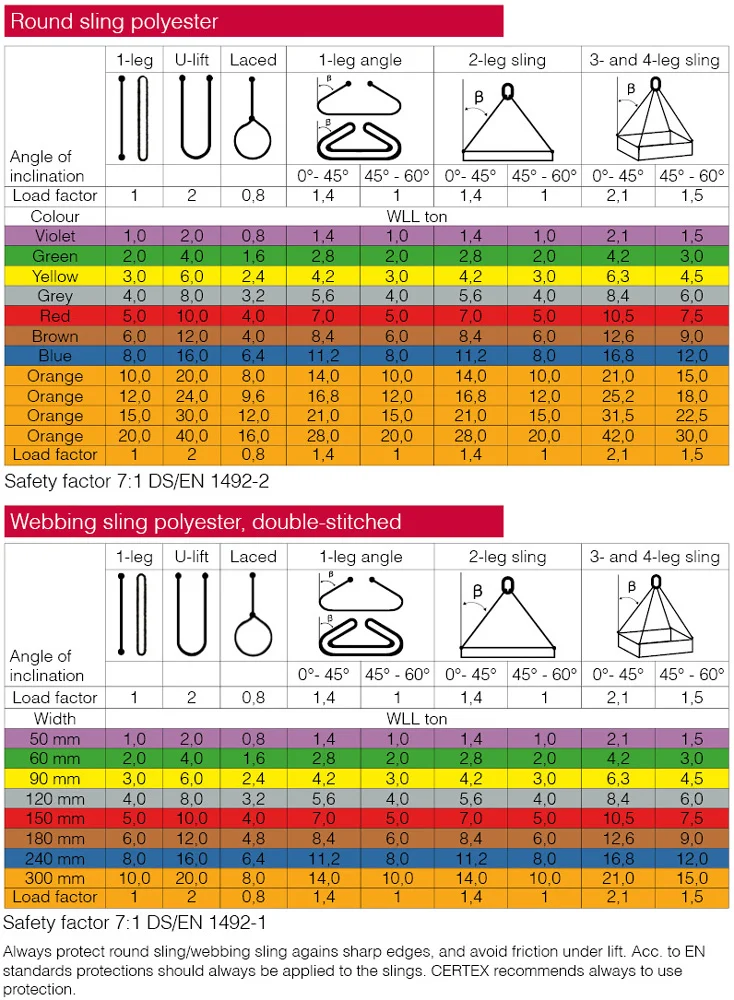Colour coding of textile slings

The reason for the colour coding
Polyester lifting slings are ideal for lifting tasks that require equipment that won't damage or weaken the surface of the load.
You've probably noticed that webbing slings and round slings come in a variety of colours, and there's a specific reason for this! The colour of a sling adheres to guidelines set by EN 1492-1 (webbing slings) and EN 1492-2 (round slings).
According to the European standard, polyester slings are assigned specific colours to quickly and easily identify their working load limit (WLL). The table below shows the maximum WLL and the corresponding colour coding:
- 1-ton sling
- 2-tons sling
- 3-tons sling
- 4-tons sling
- 5-tons sling
- 6-tons sling
- 8-tons sling
- 10-tons sling and above
Besides colour coding, there are other ways to indicate the WLL of a polyester lifting sling. The most reliable method is through the sling's label.
Polyester slings must have a blue label sewn on, displaying statutory markings and related information.
A part of this label with duplicate information is stitched under the cover overlap for reference purposes. The visible part of the label contains essential data such as manufacturer ID, year of manufacture, material, Effective Working Length (EWL), serial number, European standard number, and the maximum Work Load Limit (WLL).
Another method of indicating the WLL, which is not included in the EN 1492 standard, is through the number of black stripes on the webbing material of the sling. In the picture of round slings in various colours, you can observe one or more continuous black stripes on the webbing material, with each stripe representing one ton of the sling's WLL. Slings with a WLL of 12 tons and above do not have black stripes.
In the load tables, you can find both the colour code and the load limit in tons (WLL) for different slings.

Do you wish to know more? Please reach out.
For faster response, call us directly at +47 66 79 95 00!
Colour coding of textile slingsEver wondered why polyester slings come in different colors? This article explains the color coding system for textile slings. |
Learn more |
Criteria for rejecting textile slingsRound slings and webbing slings need regular inspections for defects and damage. But when is it time to discard them? |
Learn more |
Proper use of textile slingsHow should textile slings be utilized? Explore safe load handling techniques, coupling methods, proper storage, and safe lifting practices. |
Learn more |
Washing instructions of textile slingsIt might seem odd, but synthetic slings like round slings and webbing slings can be washed. Find out how here. |
Learn more |
What are the different types of textile slings?Lifting slings are available in various materials and strengths, so selecting the right sling for your specific lifting task is crucial. |
Learn more |
What is Dyneema®?What exactly is Dyneema®? Are all HMPE fibers identical? What makes HMPE unique? This article will provide answers to your questions. |
Learn more |


